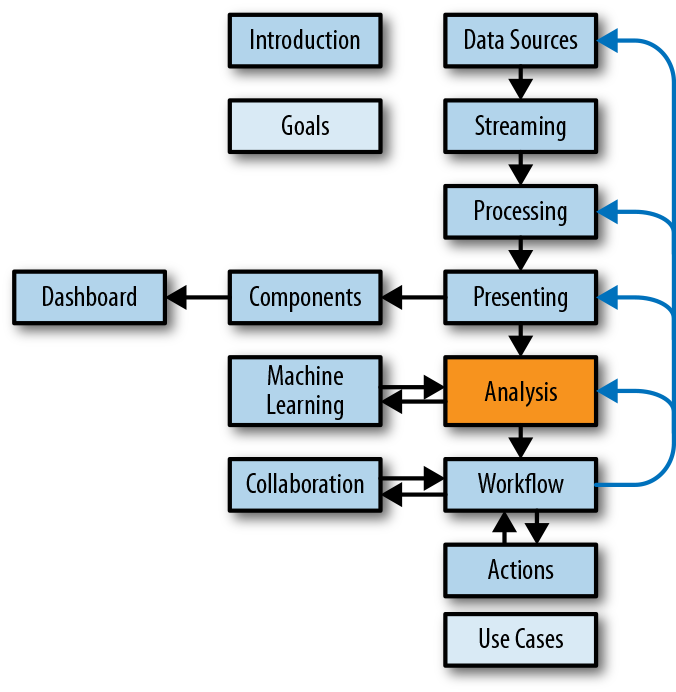Chapter 9. Streaming Analysis

Visual analysis is something we do intuitively when we see things. There are particular cognitive processes that we target when we are considering visual analysis for a data visualization. The goal is to leverage the natural capabilities of the analyst while bringing certain aspects into conscious recognition. Here we will go over some basic concepts of analysis to consider when developing a visualization. We’ll start with some pitfalls to look out for and avoid, both as a visualization designer and as an analyst.
Visual Distractions
In the conscious act of visual analysis, we need to avoid distracting artifacts that we know are unintentional or not mapped to any meaning. These are common. We want to avoid them when creating data visualizations as much as possible and try to ignore them when analyzing data through a visualization. Such artifacts include the following:
-
Minor alignment or line-connection issues
-
Features you don’t know the name of or can’t describe to others
-
Overlapping labels due to the volume of data
-
Everything considered to be chartjunk including shadows, unnecessary lines, meaningless background images, gradients, and anything else that is added unnecessarily
Visual Deception
A number of things may be done intentionally to mislead the viewer, typically in a sales context where the author of the visualization is trying ...
Get Visualizing Streaming Data now with the O’Reilly learning platform.
O’Reilly members experience books, live events, courses curated by job role, and more from O’Reilly and nearly 200 top publishers.

